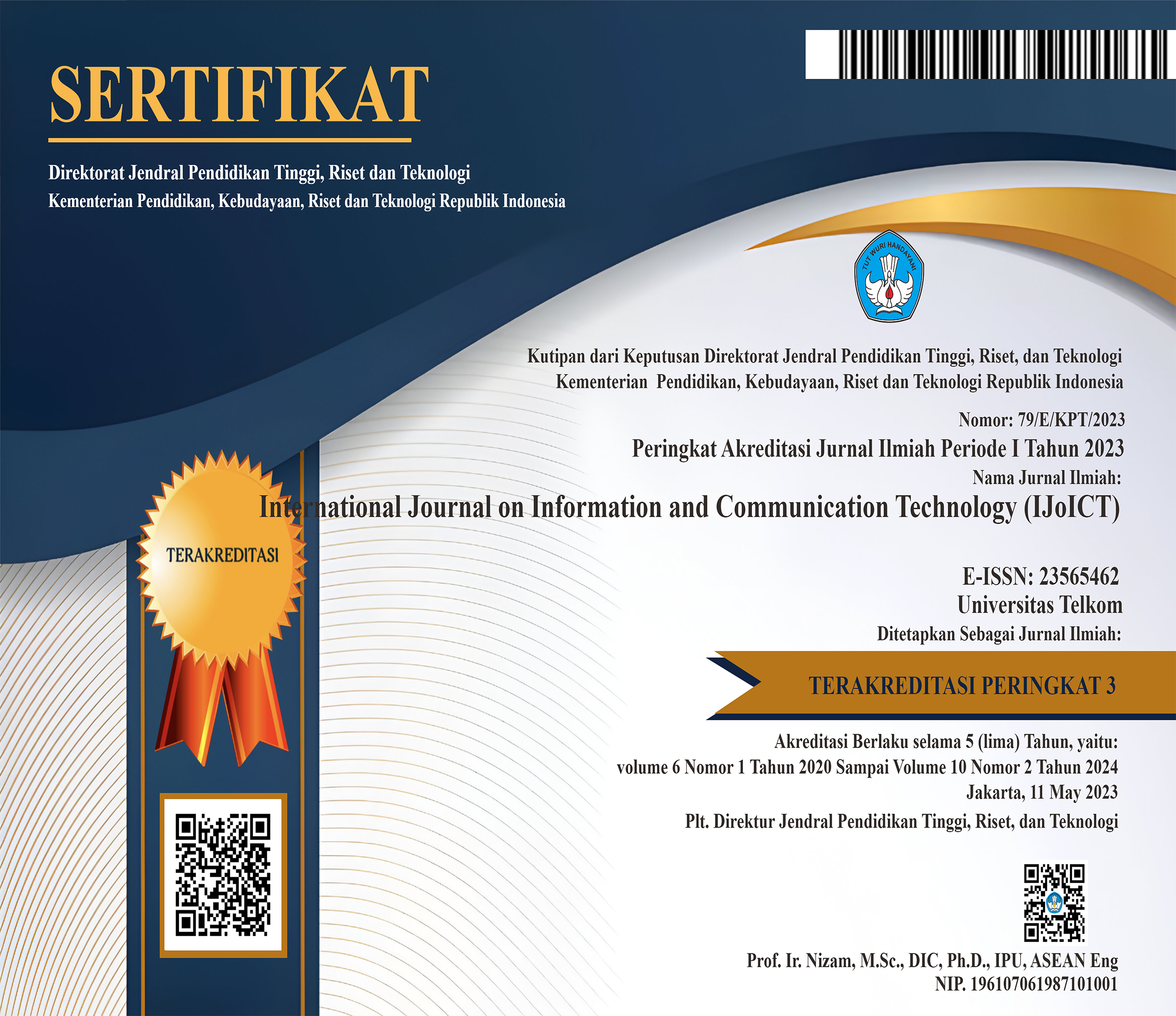WhatsApp Chat Visualizer: A Visualization of WhatsApp Messenger’s Artifact Using the Timeline Method
 Abstract views: 660
,
Abstract views: 660
,
 PDF downloads: 614
PDF downloads: 614
Abstract
WhatsApp is a medium that everyone can use to interact and to share information effectively and efficiently. However, it can be misused for criminal activities. Analyzing WhatsApp' artifacts is quite challenging as the suspect may have a lot of random conversational data to be considered. This makes it difficult for the trial process to obtain digital traces that can be identified in malicious activities such as knowing who was involved when the conversation was held and the timespan. Therefore, in this research, a social media investigation of WhatsApp was carried out by acquiring data from rooted Android devices that were used as target devices for forensic activities. A python-based application is developed to show the content of the conversation, and a web-based application is presented to visualize the data using the Timeline method. Experimental results in this research display important timeline information such as information about who was involved when and what time the conversation was carried out with the suspect.
Downloads
References
Allen, R. B. (1995). Interactive timelines as information system interfaces. In Symposium on digital libraries (Vol. 175, p. 180).
Anglano, C. (2014). Forensic analysis of whatsapp messenger on android smartphones. Digital Investigation, 11(3), 201–213.
Anwar, N., & Riadi, I. (2017). Analisis investigasi forensik whatsapp messenger smartphone terhadap whatsapp berbasis web. Jurnal Ilmu Teknik Elektro Komputer dan Informatika (JITEKI), 3(1), 1–10.
Casey, E. (2011). Digital evidence and computer crime: Forensic science, computers, and the internet. Academic press.
Clement, J. (2020, Apr). Number of monthly active whatsapp users as of 2013-2020. statista.com. Retrieved from https://www.statista.com/statistics/260819/ number-of-monthly-active-whatsapp-users/
Cortjens, D., Spruyt, A., & Wieringa, W. (2012). Whatsapp database encryption project report (Tech. Rep.). Technical report, 2011. Available at https://www. os3. nl/media/2011-2012.
Google. (2020, Jan). Timelines | charts | google developers. Author. Retrieved from https:// developers.google.com/chart/interactive/docs/gallery/timeline
Hariyadi, D., Winarno, W. W., & Luthfi, A. (2016). Analisis konten dugaan tindak kejahatan dengan barang bukti digital blackberry messenger. Teknomatika STMIK Jenderal Achmad Yani Yogyakarta, 9(1), 81–89.
Koum, J., & Acton, B. (2016, Apr). Whatsapp. Retrieved from https://blog.whatsapp.com/ end-to-end-encryption
Nguyen, P. H., Xu, K., Walker, R., & Wong, B. W. (2014). Schemaline: Timeline visualization for sensemaking. In 2014 18th international conference on information visualisation (pp. 225–233).
Nguyen, P. H., Xu, K., Walker, R., & Wong, B. W. (2016). Timesets: Timeline visualization with set relations. Information Visualization, 15(3), 253–269.
Olsson, J., & Boldt, M. (2009). Computer forensic timeline visualization tool. digital investigation, 6, S78–S87.
Pavlik, M., & MacIntoch, S. (n.d.). John, & shawn.(2015). Converging Media, 189.
Plaisant, C., Milash, B., Rose, A., Widoff, S., & Shneiderman, B. (1996). Lifelines: visualizing personal histories. In Proceedings of the sigchi conference on human factors in computing systems (pp. 221–227).
Pomalingo, S., Sugiantoro, B., & Prayudi, Y. (2019). Data visualisasi sebagai pendukung investigasi media sosial. ILKOM Jurnal Ilmiah, 11(2), 143–151.
Sai, D. M., Prasad, N., & Dekka, S. (2015). The forensic process analysis of mobile device. Int. J. Comput. Sci. Inf. Technol, 6(5), 4847–4850.
Stab, C., Nazemi, K., & Fellner, D. W. (2010). Sematime-timeline visualization of time-dependent relations and semantics. In International symposium on visual computing (pp. 514–523).
Tassone, C., Martini, B., & Choo, K.-K. (2017). Forensic visualization: survey and future research directions. In Contemporary digital forensic investigations of cloud and mobile applications (pp. 163–184). Elsevier.
Tassone, C. F., Martini, B., & Choo, K.-K. R. (2017). Visualizing digital forensic datasets: a proof of concept. Journal of forensic sciences, 62(5), 1197–1204.
Thakur, N. S. (2013). Forensic analysis of whatsapp on android smartphones.
Umar, R., Riadi, I., Zamroni, G. M., et al. (2018). Mobile forensic tools evaluation for digital crime investigation. Int. J. Adv. Sci. Eng. Inf. Technol, 8(3), 949.
Wang, Z., & Yuan, X. (2014). Urban trajectory timeline visualization. In 2014 international conference on big data and smart computing (bigcomp) (pp. 13–18).
Yadav, S., Prakash, S., Dayal, N., & Singh, V. (2020). Forensics analysis of whatsapp in android mobile phone. Available at SSRN 3576379.

This work is licensed under a Creative Commons Attribution 4.0 International License.
Manuscript submitted to IJoICT has to be an original work of the author(s), contains no element of plagiarism, and has never been published or is not being considered for publication in other journals. Author(s) shall agree to assign all copyright of published article to IJoICT. Requests related to future re-use and re-publication of major or substantial parts of the article must be consulted with the editors of IJoICT.









.png)

.jpg)




